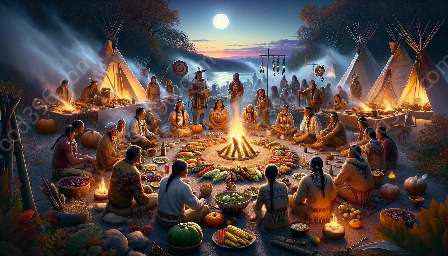The culinary traditions of Native American culture have left a lasting impact on the cuisine history, shaping unique flavors and cooking techniques that have endured for centuries.
Native American Cuisine History
The history of Native American cuisine is a tapestry woven with the traditions, customs, and resources of the diverse tribes that populated North and South America. From foraging and hunting to cultivating crops, Native American culinary practices were deeply connected to the land and its bounty. Traditional cooking methods such as steaming, smoking, and roasting over open flames were integral to preparing meals, and the use of indigenous ingredients like maize, beans, squash, wild game, and fish formed the foundation of Native American diets.
Cuisine History
Cuisine history is a fascinating journey that reflects the evolution of human culture and society. It encompasses the influences of different civilizations, trade routes, migration patterns, and agricultural practices. Each region and era has contributed to the global culinary tapestry, shaping the development of cooking methods, ingredient choices, and flavor profiles.
The Influence of Native American Cultural Traditions on Cuisine
The impact of Native American cultural traditions on cuisine is profound and multifaceted. It extends beyond the ingredients and recipes to encompass spirituality, sustainability, and a harmonious relationship with nature. Native American culinary traditions have deeply influenced the modern food landscape, leaving a legacy that resonates in dishes enjoyed around the world.
Ingredients and Flavors
Native American cuisine history has contributed an array of unique ingredients and flavors to the global palate. Maize, also known as corn, was a staple crop for many tribes and continues to be a versatile and essential ingredient in various dishes. Cornmeal, hominy, and corn-based breads are ubiquitous in Native American cooking. Additionally, indigenous fruits, vegetables, and herbs such as squash, beans, wild rice, and sumac have made their mark on culinary traditions, adding depth and complexity to a wide range of recipes.
Cooking Techniques
Traditional Native American cooking techniques like pit-roasting, steaming in earthen pits, and smoking meats have had a lasting influence on culinary practices. These methods are revered for their ability to infuse dishes with unique smoky, earthy flavors, and they continue to inspire contemporary chefs and home cooks to explore alternative cooking techniques that celebrate the natural essence of ingredients.
Spirituality and Sustainability
Native American cuisine history is deeply intertwined with spirituality and sustainability. The reverence for nature and the practice of using all parts of an animal or plant align with the modern ethos of ethical and sustainable cooking. The holistic approach to food extends beyond the plate, emphasizing the importance of gratitude, balance, and interconnectedness with the environment.
Modern Interpretations and Revival
While colonization and historical injustices have led to the erasure of many Native American culinary traditions, there is a growing movement to revive and celebrate indigenous foods and cooking practices. Chefs, food scholars, and tribal communities are working together to reclaim and reintroduce traditional ingredients and methods, infusing modern cuisine with a renewed appreciation for Native American culinary heritage.
Fusion Cuisine
The fusion of Native American culinary influences with contemporary cooking styles has created an exciting landscape of fusion cuisine. Creative chefs draw inspiration from indigenous ingredients and techniques, integrating them into innovative dishes that pay homage to the roots of Native American cuisine while embracing modern culinary trends and global flavors.
Cultural Exchange and Education
Efforts to honor and preserve Native American culinary traditions involve cultural exchange and educational initiatives. By sharing knowledge, stories, and recipes, individuals and organizations are contributing to a greater understanding and appreciation of the rich tapestry of indigenous food cultures. These endeavors help bridge the gap between past and present, fostering a sense of pride and awareness of Native American culinary heritage.
Conclusion
The cultural influences of Native American culinary traditions have profoundly shaped the global culinary landscape, enriching it with an array of distinctive flavors, ingredients, and cooking techniques. Through a blend of tradition and innovation, the legacy of Native American cuisine history continues to inspire and captivate food enthusiasts, offering a vibrant and meaningful connection to the rich and diverse heritage of Native American culture.

